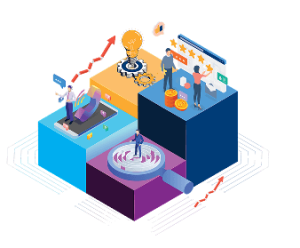
Shifting from NPS to CSAT: Why It’s Time to Rethink CX Metrics

In this blog series, we will explore the shifting trends in CX metrics.
For over a decade, Net Promoter Score (NPS) has been the gold standard for measuring customer loyalty. It asks one powerful question:
“How likely are you to recommend us to a friend or colleague?”
It’s clear, quantifiable, and familiar across industries. But here’s the challenge: in 2025, customer experience is measured moment-to-moment, not just over time.
NPS tells you what happened. CSAT tells you what’s happening.
As expectations shift toward real-time, personalized service, many forward-looking organizations are turning to Customer Satisfaction (CSAT) — a metric designed to measure satisfaction immediately after an interaction, when it matters most.
Why NPS Alone Isn’t Working Anymore
While NPS offers a high-level view of brand sentiment, it’s often too broad, too delayed, and too disconnected from what happened in the customer journey.
According to Gartner, by 2025, more than 75% of organizations will have abandoned Net Promoter Score (NPS) as a measure of success for customer service and support.”
Why the shift? Because companies need actionable, in-the-moment insights that allow them to respond and improve before loyalty erodes.
Why CSAT Is Rising
CSAT asks one simple but powerful question:
“How satisfied were you with your recent experience?”
This is usually asked immediately after a support interaction, delivery engagement, or transaction, while the experience is fresh in the customer’s mind.
What makes CSAT more effective in today’s landscape?
- Real-Time Feedback: Captures issues as they happen
- Granular Detail: Tied to specific products, channels, or agents
- Actionability: Enables immediate coaching, process change, or recovery
And most importantly, customers care about it.

According to Salesforce, 89% of consumers are more likely to make another purchase after a positive customer service experience.”
Meanwhile, the cost of a bad experience is steep.
The Real Impact of Poor CX
Khoros reports: 65% of customers said they have changed to a different brand because of a poor experience.
According to Zendesk, after more than one bad experience, around 80% of consumers say they would rather do business with a competitor.
These numbers indicate that loyalty is fragile, and reactive strategies are no longer effective.
NPS vs. CSAT: What’s the Difference?
| Metric | NPS | CSAT |
|---|---|---|
| Focus | Long-term loyalty | Momentary satisfaction |
| Question | Would you recommend us? | “How satisfied were you?” |
| Timing | Periodic (e.g., annually or semi-annually) | Immediately, post-interaction |
| Value | Benchmark brand sentiment | Reveals operational gaps |
| Limitation | Lacks specificity and actionable data | Doesn’t reflect long-term loyalty |
The Smarter CX Strategy
This doesn’t mean you should abandon NPS completely. It is still an excellent lagging indicator. The best CX programs combine metrics:
- NPS to measure long-term advocacy
- CSAT to fix frontline friction
- CES (Customer Effort Score) to identify task complexity and journey pain
Together, they provide a more comprehensive, real-time understanding of how customers think, feel, and behave. In my next blog, I will explore the benefits of measuring individual journeys, real-time nudges and tracking customer effort.
Final Thought
In a world where one poor experience can cost you a loyal customer, waiting for semi-annual NPS scores is simply too slow.
NPS tells you where you stand. CSAT shows where you’re slipping.
As we move further into 2025, organizations must rethink how they measure success, not just from the top down, but from every customer moment that matters.
Let’s connect if you’re exploring how to modernize your CX measurements and act on feedback in the moment.

ABOUT THE AUTHOR
Mike Pietig is the Vice President of Client Success at Servion, where he leads a global team focused on client outcomes, satisfaction, and long-term value realization across industries.




